#pyrenean mountain views
Photo

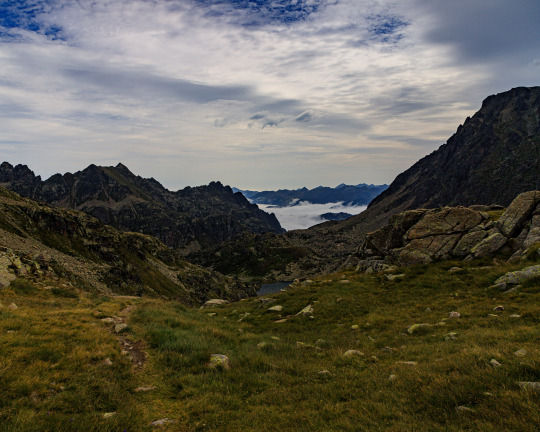



Pyrenean mountain views 56-60/?- 56: Pyrenees, Spain, July 2018
57, 58, & 60: Haute Route Pyreneenne, August 2019
59: Haute Route Pyreneenne, July 2018
photo by nature-hiking
#pyrenees#mountains#landscape#nature#hiking#pyrenean mountain views#photo series#HRP#Haute Route Pyreneenne#long distance trail#backcountry#wilderness#photography#original photography#photographers on tumblr#HRP 2019#hrp 2018
200 notes
·
View notes
Text
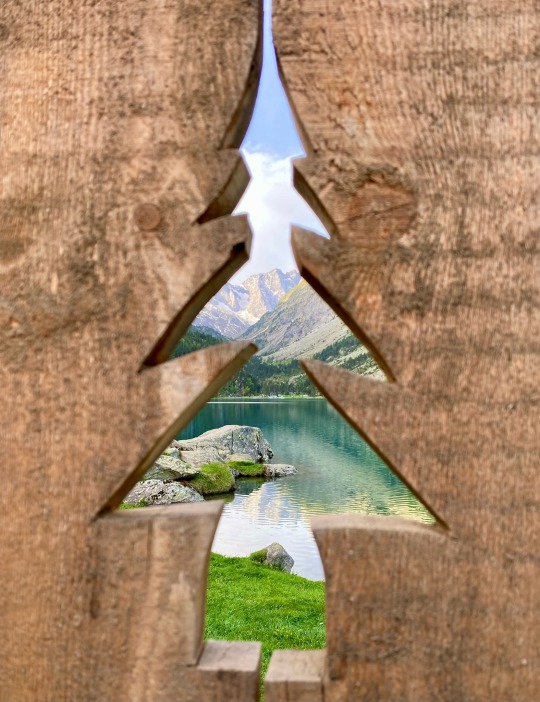
Hiking in the Pyrenees, 2022
#pyrenees#Pyrenean mountains#hiking#camping#trekking#mountains#Pyrenees lake#lake views#mountain views#travel#European mountains#French Pyrenees
3 notes
·
View notes
Text
6 notes
·
View notes
Text
Panticosa to Sallent de Gallego
We’ve enjoyed our time in Panticosa but it’s time to move on. Today we departed town a different way to how we have arrived and departed the last two days. The day we arrived we saw a road with a 16% sign and yes we went up that 🙄
The start of today was pretty much all uphill, in fact if you look at the elevation graph for today it looks like a very narrow bell curve (i.e steep up steeper down and a Pyrenean flat in between). Having said that it was a beautiful walk and much of the initial uphill was in a forest.
The weather so far has been very kind to us - coolish mornings, warm but not stifling days. It does get cold at night but we put on a bunch of layers when we head out for dinner.
So once out of the forest and after some morning tea we walked out along a ridge for some views and then back to a 4WD track. On that track we got more great views and also saw a lot of the mountain ponies. I can’t believe how high up these mountains they go.
After lunch it was all downhill and steep. I have to say I was pleasantly surprised by how good the downhill was as I’d almost been having nightmares about it. Again great views and more ponies.
Finally we popped out onto a road and walked into Sallent de Gallego. It’s a lovely town and we’re staying in a lovely little hotel run by the fabulous María José. Having dumped our packs and boots we headed into town for a post walk drink and a spot of shopping. We found a mountain sports store that is closing down so that was a happy hunting ground. From there it was over to the supermarket for a few provisions.
Back at the hotel it was showers, washing and some repacking. Tomorrow night we’re in a mountain hut and back here the following night so we need to carry with us what we need for tomorrow night and the next day. Thankfully we also managed to watch the highlights of yesterday’s Vuelta stage (well maybe not thankfully as we were very disappointed by one of that stages events). Unfortunately we won’t be able to catch up with the stages anytime soon and it finishes Sunday.
Tonight we ate at a lovely restaurant. It was by far the best meal we’ve had so far on the trip. Unfortunately we’re all pretty tired so it wasn’t long before we were heading back to the hotel. Lights out soon - night, night 🥱
4 notes
·
View notes
Text
Tour de France 2023
Stage 1 of this year's Tour de France - in the Basque Country. NB - Spoiler alert, the winner of the stage is mentioned at the end of the post... Enjoy :-)
STAGE 1: BILBAO to BILBAO
Bonjour or should I say, ‘Egun ona’? Hello and welcome to Tour de France2023: Stage 1 Bilbao. The Tour commences in the beautiful and ancient Basque Country; the land which straddles the Pyrenean mountains and where France and Spain meet.
This part of Spain and France fascinates me, the language and culture are uniquely different from both parent countries. While a…

View On WordPress
#adam yates#Basque Country#Bilbao#Cycling#Cycling art#LeTour#simon yates#TDF2023#Tour de France#Tour de France 2023
1 note
·
View note
Text
ISARD PIRINENC 20230415181249
The chamois, sometimes called the Pyrenean chamois to distinguish it from the Alpine chamois, is a common bovid in the Pyrenees. It is found in the Pyrenees in general, although there are also small populations in other mountain ranges in southern Europe such as the Apennines and the Cantabrian Mountains.Location: Setcases, Girona, Catalonia, Southern Europe.
Fine Art Prints
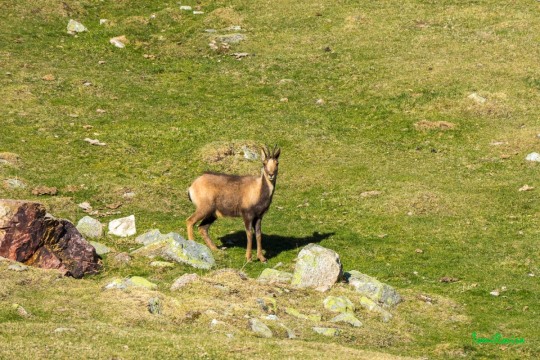
View On WordPress
0 notes
Text
Day 4: Beginning the Pyrenean Cols
The good part of my journey begins today, as I take on the renowned cols, or mountain passes, of the Pyrenees. I've curated a list that includes both celebrated Tour de France stages and offbeat trails shared by fellow bikers.
I begin with Col d’Erroymendi, which I had tried and failed to reach the previous night. Under the bright morning sun, I make a second attempt. The ascent to the pass is utterly different this time; majestic trees, expansive valleys, and glimpses of wildlife offer an awe-inspiring spectacle. However, I have to be careful here. I find out that the white lines, akin to Teflon in slipperiness, can be a hazard if you're too close, especially with logging lorries passing by.
Interestingly, I'm attempting this journey in late May when many passes are usually closed due to the risk of snowfall. They typically open in mid-June. Seeing a closed gate on Col d’Erroymendi, I wait awhile. When I meet a group of British and Irish riders who've just traversed the pass, I feel emboldened to press ahead. My solo adventure seems a curiosity to them, yet they bid me good luck.
With my bike loaded with 30 kg of luggage, getting accustomed to its handling is a learning curve, literally, as I blunder my way through aggressive hairpins. Every bend teaches me more about the bike and presents breathtaking views - silver fir and mountain pine trees give way to valleys abundant with oak, acer, and chestnut trees.
A short while later, I arrive at Larrau and plan more cols. I decide on Col du Soudet, which climbs to around 1500m, followed by Col de Labays, Col d'Ichere, and Col d'Aubisque.
The climb up Col du Soudet reminds me of the Welsh rat runs that I’m used to. Very pretty, roads lined with bracken, but full of blind bends that are interrupted with small hamlets. It’s a mix of road conditions too - some dry and super smooth - others, canopied by trees which hadn't let the previous day's rain dry up yet. The last kilometre, the views open up to a full 360 panorama where I see my first snow-topped peaks. This climb was the first real test for the Guzzi, but it defies my earlier apprehensions about its capabilities against more powerful bikes.
The descent of Col du Soudet towards Col de Labays is smooth, almost too smooth as evidenced by the fresh tar tracks and a construction worker's disapproving finger wag. Confident in the road surface, I open the bike up a little. The sight of a gravel entry to Col de Labays made me think twice, and I chose to continue my descent into the village of Arette instead.
Stopping at a café named Maison Gouaillardeu, I find that English and gesturing don't cut it in this part of the world. Basic knowledge of French and Spanish is vital. It's here I encounter a friendly English couple who assist me in navigating the language barrier and give me some tips about my journey.
Later, I decide to visit the local gîte, where I had intended to stay the night before. The owners, British nationals with excellent knowledge of the area, confirm that Col d'Aubisque is indeed closed due to recent snowfall. We huddle over a map and they assist me in devising a new and safer route that includes Col de Lie, Col d'Ichere, and Col de Marie Blanque.
The climbs to Col de Lie and Col d'Ichere are slow and on a single-track lane, more suited to cyclists, but they do reveal some spectacular views, like the geometrical perfection of pyramid shaped mountains contrasted with green grass on one side and deep green trees on the other. The journey through these cols and onwards to the Parc de Pyrenees is nothing short of magnificent. The open plateau view from Col du Porteigt and what became a real riding road down to Bielle is a joy.
Whilst in Bielle, I'm due for a quick supermarket trip for water and rolling papers. Strangely, no French supermarkets seem to sell tobacco products, but just when I was wondering where to get some, a French lady flagged me down in the carpark.
With a combination of gestures and my limited French, I decipher that she wants me to follow her to a 'tabac', a local tobacco shop. These places I’m told are not just where you get your tobacco; they are the social heart of many rural French communities. On arrival, I found a crowd of locals outside, soaking up the sun and enjoying their drinks.
It seemed like a pleasant place to hang around for a while, so I decided to do just that. But my parked bike had unintentionally blocked some French cyclists, and, with my minimal French, they got a little frustrated. Deciding to avoid causing more inconvenience, I collected my things and swiftly returned to the road.
I hadn’t achieved many miles so far, and needed to make some progress.
Heading south, I jump on a main D road towards Arreau. I'm joined by a group of Eastern European riders on the road. We ride in a loose formation for an hour, the more open roads proving a pleasant break from the challenging twists of the previous mountain passes.
En-route, I check off Col d'Aspin. This col road is wider, with clear lines of sight on its twisty bits. The views from the top were a delightful end to the day. The low evening sun, the distant sound of clanging cowbells, and the sight of snow-capped peaks created a cinematic aura that's difficult to put into words. It was, without a doubt, the highlight of my day.
I’ve set up camp at a surprisingly well-equipped municipal campsite in Arreau. Rain is pouring, and I'm currently writing this in a cramped bivvy bag whilst I hear a thunderstorm roll in. The morning can’t come quick enough!
0 notes
Text
Domaine Madrona | Luxury Accommodation | Lauthentic France
Domaine Madrona is a luxury accommodation restored farmhouse that facilitates relaxation with spectacular views of the surrounding forests and mountains.
Our new luxuriously restored farmhouse has been designed to facilitate relaxation and reconnection with friends, family, and nature. Our staff is here to look after your needs as much as you choose, from cooking, cleaning to organizing local outings.

You can decide what kind of holiday experience you would like, with local guides on hand to show you around the many neighboring cultural sites and the Mediterranean beaches. If you are feeling adventurous, we have qualified staff on call to help you explore the mountains, the famous canyons, many mountain bike trails, coastal walks, and scuba diving sites nearby, all at the level you request. If it is peace and quiet you prefer, our 235-acre park provides the perfect setting to relax in a private and sumptuous natural setting. Walk in our forests and explore the rivers and hills in total privacy, enjoy an evening star gazing, or watching the sunset with a cocktail while delicious local food is prepared for you. Whether it’s cooking classes, wine tasting in the vineyards, or yoga by the pool we can provide the perfect break, and always be at your pace. At Domaine Madrona, we can house around 20 guests in style.
We offer our guests 9 king-sized bedrooms and a spacious dormitory-style attic for children. Each room has its own feel, with a perfect balance of calm and comfort. All rooms are spacious and bright with access to the gardens and terraces and with spectacular views of the surrounding forests and the Pyrenean mountains.
visit our site : https://rentals.lauthenticfrance.com/rental/domaine-madrona/
0 notes
Text
Great Pyrenees Pitbull Mix - All You Need To Know About This Breed
The great Pyrenees pitbull mix is an extremely rare and unique dog breed. Many people are curious about this particular dog breed; however, if you want to learn about the great Pyrenees mixed with pitbull, then keep reading our article.
About Great Pyrenees Breed
The Great Pyrenees is a large, gentle breed of dog. It is a descendant of the extinct Pyrenean Mountain Dog, which was first bred in…

View On WordPress
0 notes
Photo
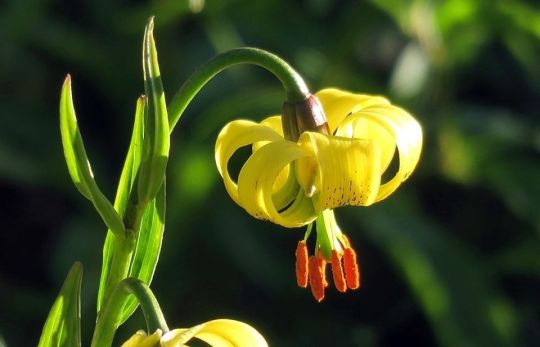

Pyrenean lilly (Lilium pyrenaicum) is the characteristic flower of the Núria Valley (Vall de Núria) in the Pyrenee mountains of the Comarques Gironines region of Catalonia.
The first photo is a Pyrenean lilly in the valley, and the second one is a view of the Núria sanctuary.
Photos by Corriols de Llum and Roadtripping Catalunya.
#vall de núria#núria#catalunya#natura#fotografia#landscape#flowers#lilly#pyrenees#mountains#travel#europe#travel photography#wanderlust#explore
60 notes
·
View notes
Text
FIRST SEASON
Our first season, the Dracula Trails Route and the ADV Bike Rider Magazine article...
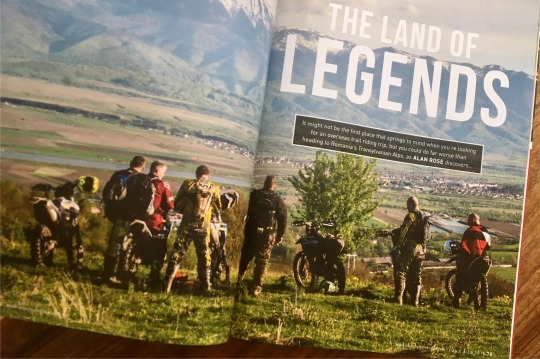
April 2018 was the start of our first season and by December 2017 we already had a few trips booked for the early spring and autumn...Nick has contacted us in early October 2017and requested do ride with us together with his group from Manchester UK. After a few emails the trip was booked and on April 17th we were travelling to Cluj Napoca to pick up seven riders.
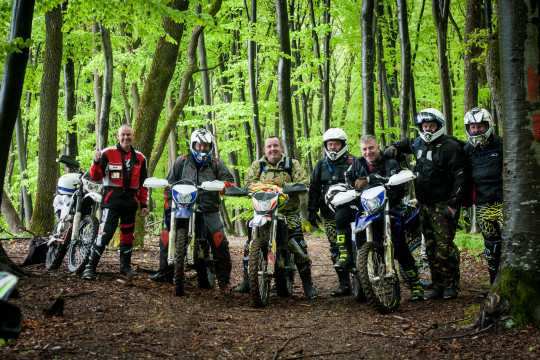
The plan was to ride the Dracula Trails Route https://www.transylvaniatrails.com/products. We had everything planned and ready to ride...Nick mentioned in one of his emails that he was in contact with someone from the ADV Bike Rider Magazine https://www.adventurebikerider.com and he advised that we should take lots of pictures during the trip...
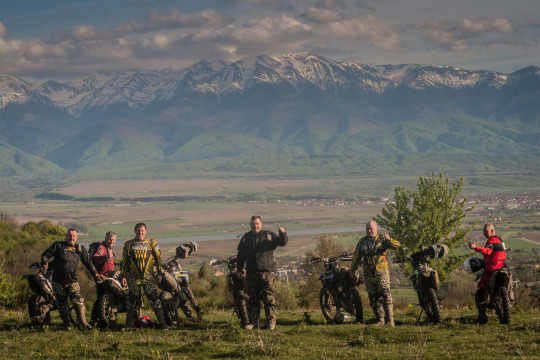






The trip was a big success!
A few weeks after the trip we received an email from Alan ( one of the gents from the group ) with a link to ADV Bike Rider Magazine website...And there it was, an article written by Alan published in the Magazine No.47... WOW!

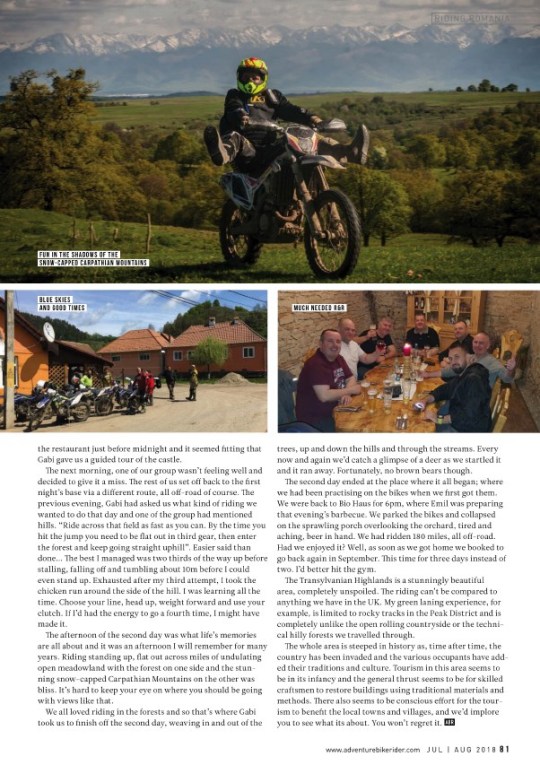



We made a few new friends and we have been lucky to ride together several times since 2018.....
Full article from the Magazine bellow:
What's the first thing you think of when it comes of Transylvania? Castles? Sure. The birthplace of Dracula? Certainly. Trail riding? Probably not, but maybe it's about time you should. Seven of us booked a two-day tour with Transylvania Trails in the middle of April this year. The all-inclusive price covered accommodation and food for three nights, bike hire, personal protective equipment/clothing and guide for two day's riding. All that was left for us to do was turn up eager to explore the best that Transylvania had to offer.
Our guide Gabriel ( Gabi ) collected us from the airport at Cluj and took us to what was our base at Nucet, near Sibiu. Bio Haus Cioran Guest House is a larged timber framed chalet baking onto an orchard with forestry beyond. Gabi introduced us to our hosts Mioara and Emil who showed us our rooms. Back downstairs, beer in hand, Gabi showed us the bikes and explained the differences between the Sherco 300 and the "Factory" edition. The nine bikes were lined up at the back of the house, all clean and shiny, lying in wait for our adventure. "Shall we help you lock them away"? we asked? "No need", was the reply. "They'll be fine here". Not like in the UK.
The food at Bio Haus is home made and homegrown traditional romanian fare. Romanians love their soup and each meal started with a bowl so big you could have skipped the main meal and not been hungry. Homemade wine and schnapps completed the delicious three-course meal.
The next morning, after a substantial breakfast, Gabi gave us our riding equipment, including helmet, boots, shirt, trousers, body armour, gloves and goggles. Most of the kit was brand new and we had to take it out of the bags and take the labels off before using it. We then had a pre-ride briefing, where Gabi told us about the bikes, about following his wheel tracks as far as possible and about the dangers in the forests: wild boar, deer, dogs and brown bears! We were led along a track running right next to the guest house, following it uphill and into the countryside beyond. Gabi then left us in a clear- ing on top of a hill to get used to the bikes. Ten minutes later he was back, and we were off.
I had only been riding off-road for about 10 weeks, although I have had road bikes for the past 40 years, and have just bought a Honda CRF2S0L. The braking and changing gears standing up still felt new to me and, coupled with new moto- cross boots and the snatchy throttle of a much more powerful bike, I wondered how I would cope.
We set off over the hillside quite gingerly at first, but then the pace picked up a bit as our confidence grew. The Romanian countryside is quite ditferent to that in the UK. There are no fences or walls and what livestock we did encounter was herd- ed together by dogs with a shepherd present. Gabi had warned us of the dogs prior to setting off. They are the size of Pyrenean mountain dogs and chased us away if we got too close to the sheep. Andy, our most experienced rider, was frightened of dogs so he employed the tactic of putting other bikes between him and them as they chased us. This meant he wasn't picking the best line or concentrating fully and, of course, he subse- quently fell off. At that point, the dogs had fortunately lost interest in him and returned to the flock.
Once Gabi judged we were more comfortable with the bikes we entered the forest. For most of us, this was our favourite section. It was quite open and well lit, with very few bushes. The ground was soft and loose, covered with leaf litter while a few hills, streams and a little mud kept things interesting. In short, it was perfect.
Gabi explained that most of the countryside is state owned and the farmers rent the land for 99 years. There are some private properties, but it seems by and large that you can ride where you want. Having said that, Gabi then showed us a valuable lesson. After a fast-open section, he stopped and gathered us around. We rode slowly a little further and stopped at what appeared to be a small drop. In fact, what lay before us was a sheer drop of at least 30m!
A short road section through a traditional Romanian village led us to a fortified church on a hill. This was to be our lunch stop. A lot of the roads in this area are dirt and the drainage is by a ditch on either side. Don’t even think of lampposts and footpaths, as they don't exist. Nobody in these villages has cars, but there are one or two horse-drawn carts.
Everyone in the villages seemed pleased to see us. The old men sitting under the shade of the trees waved while the barefoot kids at the side of the road put their hands up for us to high five as we rode past.
We took off our riding gear, hung it up to dry and lay on the grass for 10 minutes to get our breath back while Gabi re-fuelled the bikes from containers he had previously dropped at the church. We were led into a traditionally decorated stone room within the restored fortified walls where a table was laid for our midday meal. All meals here are sit down three course aftairs. Soup, of course, traditional chicken stew, and cake, which seemed to be made from cheese and currants.
We set off again, this time at a more leisurely pace, and after about an hour one of the bikes seemed to be starting with a clutch problem. The bike had only done 150 miles from new, but Gabi decided rather than have a problem in a remote area we would wait in a village for a replacement bike. A quick phone call and 45 minutes later, his father-in-law arrived with a replacement bike in the back of a pickup. Gabi has designed each tour to incorporate as much varied terrain as possible. By this time, I was feeling more comfortable on the bike, getting used to the immediate power delivery, even in ‘soft' mode, which I was learning could get me out of trouble where my CRF would bog down and stall. Standing up on the pegs all day was taking its toll, however, and the shoulders and back were beginning to ache.
A lot of the soil in the Transylvanian Highlands is red clay. Even where it was dry, the farm tracks we encountered were slippery. In fact, when we came across deep, wet ruts (my nemesis) on an uphill section, it was almost a relief to gently fall otf, coming to rest in the bushes, which stopped me from rolling down a steep slope. I looked at my back wheel, which had turned into a clay coloured slick. No wonder. More mead- owland, wilderness, and farm tracks followed and at 9pm we emerged from the forest to arrive at our lodgings for the night in Sighisoara. This small town is dominated by an imposing castle on a hill that was once owned by Vlad Dracul or, as we know him, Vlad the Impaler, the inspiration for Bram Stoker's Drocu to. In these parts, he is known as a hero as he was al-leged to have persecuted only those ‘nobles' who were taking advantage of their position to thedetriment of the ‘peasants'.
We pushed the bikes into the courtyard of the little bed and breakfast we were to stay at. Once showered, we walked across the road to a traditional Romanian restaurant where we were shown to our table in the basement. Gabi interpret- ed the menu for us and, of course, there was soup. Andy was intrigued by a starter that Gabi described only as lard. Once it arrived, it turned out that it was indeed a small bowl of lord sprinkled with paprika! It came with a side salad, which he left. All the food was locally sourced and homemade. We left the restaurant just before midnight and it seemed fitting that Gabi gave us a guided tour of the castle.
The next morning, one of our group wasn't feeling well and decided to give it a miss. The rest of us set off back to the first night’s base via a different route, all off-road of course.
The previous evening, Gabi had asked us what kind of riding we wanted to do that day and one of the group had mentioned hills. “Ride across that field as fast as you can. By the time you hit the jump you need to be flat out in third gear, then enter the forest and keep going straight uphill”. Easier said than done... The best I managed was two thirds of the way up before stalling, falling oft and tumbling about torn before I could even stand up. Exhausted after my third attempt, I took the chicken run around the side of the hill. I was learning all the time. Choose your line, head up, weight forward and use your clutch. If I'd had the energy to go a fourth time, I might have made it.
The afternoon of the second day was what life's memories are all about and it was an afternoon I will remember for many years. Riding standing up, flat out across miles of undulating open meadow land with the forest on one side and the stunning snow-capped Carpathian Mountains on the other was bliss. It's hard to keep your eye on where you should be going with views like that.
We all loved riding in the forests and so that's where Gabi took us to finish off the second day, weaving in and out of the trees, up and down the hills and through the streams.
Every now and again we'd catch a glimpse of a deer as we startled it and it ran away. Fortunately, no brown bears though.
The second day ended at the place where it all began; where we had been practising on the bikes when we first got them. We were back to Bio Haus for 6pm, where Emil was preparing that evening’s barbecue. We parked the bikes and collapsed on the sprawling porch overlooking the orchard, tired and aching, beer in hand. We had ridden 180 miles, all off-road. Had we enjoyed it? Well, as soon as we got home we booked to go back again in September. This time for three days instead of two. I’d better hit the gym.
The Transylvanian Highlands is a stunningly beautiful area, completely unspoiled. The riding can't be compared to anything we have in the UK. My green-laning experience, for example, is limited to rocky tracks in the Peak District and is completely unlike the open rolling countryside or the technical hilly forests we traveled through.
The whole area is steeped in history as, time after time, the country has been invaded and the various occupants have add- ed their traditions and culture. Tourism in this area seems to be in its infancy and the general thrust seems to be for skilled craftsmen to restore buildings using traditional materials and methods. There also seems to be conscious effort for the tour- ism to benefit the local towns and villages, and we'd implore you to see what its about. You won't regret it.
1 note
·
View note
Photo

Pyrenean mountain views 64/? - Haute Route Pyreneenne, August 2019
photo by nature-hiking
#pyrenees#mountains#stream#landscape#nature#pyrenean mountain views#HRP#Haute Route Pyreneenne#long distance trail#backcountry#wilderness#hiking#photography#original photography#photographers on tumblr#HRP 2019
136 notes
·
View notes
Text
Taurus April Feast Day of St Bernadette

By shirleytwofeathers
April 16 is the feast day of Saint Bernadette, although in France it is sometimes celebrated on February 18. Saint Bernadette is best known for her visions of the Virgin Mary in 1858 in Lourdes, France and for the healings that have taken place at the location of the visions. St. Bernadette is the patron saint of:
Physical illness
Lourdes, France
Shepherds and shepherdesses
Poverty
Those insulted for their faith
Family
The young shepherdess who saw Our Lady in Lourdes, St. Bernadette, found solace in her suffering by turning her eyes to Our Lord. Suffering today? Pray this prayer from St. Bernadette
“O Jesus, Jesus,” she prayed, “I no longer feel my cross when I think of yours.”
If you’re suffering today, pray this excerpt of one of her prayers:
Let the crucifix be not only in my eyes and on my breast, but in my heart.
O Jesus! Release all my affections and draw them upwards.
Let my crucified heart sink forever into Thine and bury itself in the mysterious wound made by the entry of the lance.”
Saint Bernadette and The Goddess
If you think the visions of Saint Bernadette have no connection to magick and the Goddess think again – here is an alternative version to the traditional story:

On the cold morning of February 11, 1858, there was no wood in the Soubirous home, and no fire to warm them. Bernadette set out with her younger sister Toinette, and a neighbour girl, Jean Abadie, to scrounge in the forest for kindling. Maybe they would get lucky and find a rag or a bone to sell.
Heading out of town, the girls neared the foot of Massabieille, a massive, cliff-top rock formation, within view of the ancient hilltop fortress that served as the traditional landmark of the town. To reach the woods, they had to ford the river Gave at the bottom of the cliff. Bernadette’s mother had warned her not to get her feet wet, for that would surely bring on the asthma, so while the other two girls scampered across the river, Bernadette reluctantly hung back.
According to her own accounts, as she lingered near the banks of the Gave, the girls calling after her as they hurried into the woods, she heard a sound like rushing wind. The sound seemed to be coming from a dark grotto in the rock wall under Massabielle. The noon Angelus bells were ringing from the town. As Bernadette turned to investigate the source of the wind, she saw what looked like a glowing young girl, tiny, white, and smiling brightly. She appeared to be standing above the eglantine, or wild rose, that draped the niche over the entrance to the grotto.

Bernadette rubbed her eyes and looked again. This time, the tiny demoiselle nodded, as if to greet her, and opened her arms, smiling all the while. Bernadette’s initial reaction was fear, but she couldn’t run away. She said she felt like she couldn’t move, but she did manage to instinctively put her hand in her pocket and draw out her rosary for protection. She tried to make the sign of the cross, but found that she couldn’t.
In response, the shining little maiden also produced a rosary, and crossed herself in a gesture of surprising beauty and grace. This time, Bernadette found she could respond, and after crossing herself, she began to feel calmer and a little less overwhelmed. Dropping to her knees, Bernadette began to pray her rosary. The little lady fingered her beads along with her. When they had finished, the tiny thing beckoned her to come closer, but Bernadette was too overawed to move. She then vanished, all smiles and delicate grace, leaving Bernadette to rejoin her companions.

Bernadette’s descriptions of the tiny, white maiden were consistent throughout the course of her visions. The apparition, whom she called aquero, or “that thing” in the local dialect, appeared youthful and girlish. There was nothing particularly matronly or maternal about her. Bernadette repeatedly said that aquero was about the same size as herself, if not a bit smaller. Bernadette was very small for her age. Although she had recently turned fourteen, the combined ravages of illness and malnutrition kept her about the size of an average 10- or 11-year-old. According to Bernadette’s earliest descriptions, aquero looked to be about 12 years old. This is an important distinction, and one that the well-meaning supporters of Lourdes apparently prefer to ignore.
Aquero, according to Bernadette’s initial descriptions, was a jeune fille; a bien mignonette, glowing in a white dress spun of a luxurious, soft, shiny stuff. Her head was covered in a white veil of the same magic fabric, so that only a tiny bit of her hair was revealed in the front. Her eyes were bright blue, and set in a long and very white face. The whole figure shone with a gleaming, white radiance. Around her waist was a blue girdle, which folded in the front and fell almost to the hem of her robe. Her tiny feet, barely visible beneath her robe, were bare, but each was adorned with a single, golden rose. Her rosary gleamed as well, with shining white beads and links of gold.

This costume is quite significant, for in this particular area of the Pyrenees, the locals maintained a tradition of fairy lore that told of the petito damizela in white who still lingered in the forests and grottoes of the region. When Bernadette first called the apparition a petito damizela, which translates as a petite, unmarried young lady, she may have actually been referring to aquero as a Pyrenean fairy woman. These Pyrenean fairies were tiny, enchanting ladies in glowing, white robes. Charming, helpful, and better natured than most fairy folk, they were recognised by their gleaming garments and said to spend much time washing them to snowy whiteness in the fountains outside their grotto homes.
The roses on aquero’s feet were yet another aspect of local fairy lore, as was Bernadette’s reluctance to call her by any name other than “that thing.” According to the tradition, these delightful fairy women sometimes married mortal men, making good wives and housekeepers – for a time. Eventually, the husband would slip up and call his fairy wife by her name, at which point she would disappear back into the fairy world forever.
In the Basque population of the Pyrenees, we have a unique link into the mindset of our most distant ancestors. There is reason to believe the Basques have occupied the Pyrenees region from the remotest antiquity, possibly even to the time of the Cro-Magnon cave painters. The inaccessibility of their mountain fastness kept them relatively isolated from the Indo-European influences that swept the rest of the continent. Consequently, the Basques have retained a unique language and a culture that, while not entirely untainted by foreign contact, still reveals roots reaching down into our most shadowy origins.
Furthermore, the Basques, with their extensive folklore and mythology, are relative latecomers to Roman Catholicism. Religious writers of the 1400 and 1500s continue to speak of the Basques as “gentiles” or “pagans.” The widespread persistence of their ancient beliefs and practices provoked the full wrath of the Spanish Inquisition. The brutal repression of centuries of witch hunts has left its mark, and clearly, some of the tradition that remains is highly adulterated and Christianised, but we can still trace influences extending far back into the Neolithic, and perhaps beyond.
Basque beliefs are rooted in the landscape, in the rugged mountains, the waters, and the caves reaching deep into the earth. They held to that most primitive fundamentalism, the belief in the divinity of the masculine Sun and the feminine Moon. The terms Ost or Eguzki refer to the light of the sun and their god of the firmament. This masculine force, similar to Zeus or Thor, ruled the day and the world of light, but the night belonged to Ilargia, the Moon. Ilargia ruled the hidden, dark side of nature, the underworld of the dead. The Basques were forever fascinated with her mysterious phases and cycles.

However, the Basque people’s deepest and most widespread devotion, long before the arrival of Christianity in the Pyrenees, centred on their female deity, the great goddess who lived in the caves. Her name, perhaps the ultimate irony, was Mari. Devotion to Mari spanned the entire Basque territory, and any respectable hilltop boasted a shrine to Mari, and a statue as well, but the caves remained her favourite habitation.
Within the vast lore and ritual dedicated to her worship, the image of Mari emerges, complex and glorious. She moved like a fireball from mountaintop to mountaintop, trailing wild storms from the subterranean caverns in her wake. She demanded honour and charity from men, punishing those who failed to keep their word or refused to help others. Oddly enough, tradition holds that Mari must only be addressed in the familiar pronoun, putting a unique twist on Bernadette’s surprise at being addressed formally by her aquero. Mari commanded legions of fairy spirits, with varying titles in different locales: the Mairi, or Maide of the mountaintop cromlechs and stone circles, and the fey laminak, often spotted combing their hair in the caverns.
This great and very ancient goddess spawned a vast body of tales and traditions, and the rituals of her devotees in the caves of the Pyrenees kept the Spanish Inquisition busy for years. One of her most vicious persecutors was Juan de Zumarraga, who, in 1528, assisted in the biggest Basque witchhunt. Zumarraga eventually moved on to Mexico, where, as bishop, he persecuted and destroyed the native Aztec culture and religion just as vigorously as he had brutalised his Basque brethren.
One of Mari’s more popular minions is a creature known as Beigorri, a red-haired bull or calf. One of several cattle deities associated with her worship, Beigorri’s chief function is to serve as the guardian of the houses, or shrines, of Mari. Seen in that light, the tales of a magical bovine unearthing a long-lost statue of a female divinity, which then refuses to be worshipped in a Christian sanctuary but instead draws her devotees back to congregate at her wilderness origins, starts to make a certain kind of sense. Perhaps, in these unique Marian traditions, which continue to spring up so freely, even after centuries of repression, we can trace both the reemergence of the Basque Mari, and her conflation, in the aftermath of the Inquisition, into the all-encompassing image of the Christian Mary.
Sources:
Wikipedia
Visions Of The Virgin Mary
Pray More Novenas
https://shirleytwofeathers.com/The_Blog/pagancalendar/category/april/page/2/
2 notes
·
View notes
Text
Dino Eruption (Steam VR)
New Review - Dino Eruption (Steam VR) - Valve Index, HTC Vive, Oculus Rift & Windows MR
System: Valve Index, HTC Vive, Oculus Rift & Windows MR
Price at Time Of Review: £19.49
Comfort Rating: Red
Genre: Action
Input: Tracked Motion Controllers
Best Playing Position: Standing
Multi-Player: No
Age Rating: 15+
VR Shop Score 1/100: 40
Description: Immerse yourself on an epic journey through the ravaged dinosaur research facility steep in Pyrenean mountains. You will need to fight, hide,…

View On WordPress
0 notes
Text
Tour de France: Primoz Roglic Takes Tour Lead As Tadej Pogacar Grabs Stage | Cycling News
Tour de France: Primoz Roglic Takes Tour Lead As Tadej Pogacar Grabs Stage | Cycling News
[ad_1]
Slovenians took the laurels on the Tour de France on Sunday as rookie Tadej Pogacar won a Pyrenean mountain slog and his compatriot Primoz Roglic grabbed the overall lead. Overnight yellow leader Adam Yatesof Britain made a valiant effort to keep hold of the yellow jersey but fell gradually away on the final climb as the…
View On WordPress
0 notes
Text
Tour de France: Primoz Roglic Takes Tour Lead As Tadej Pogacar Grabs Stage | Cycling News
Tour de France: Primoz Roglic Takes Tour Lead As Tadej Pogacar Grabs Stage | Cycling News
[ad_1]
Slovenians took the laurels on the Tour de France on Sunday as rookie Tadej Pogacar won a Pyrenean mountain slog and his compatriot Primoz Roglic grabbed the overall lead. Overnight yellow leader Adam Yatesof Britain made a valiant effort to keep hold of the yellow jersey but fell gradually away on the final climb as the…
View On WordPress
0 notes